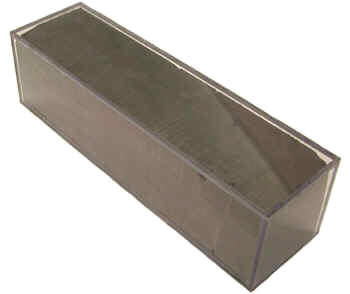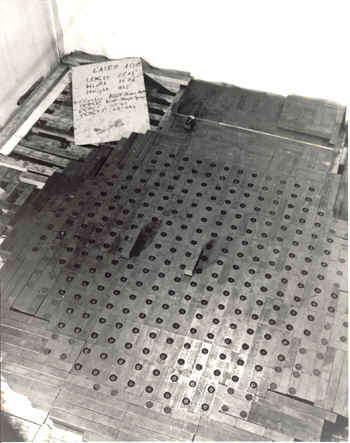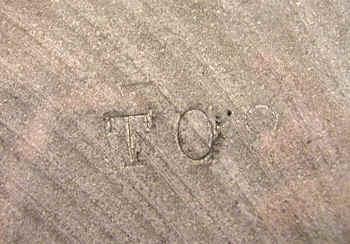Graphite from CP-1

CP-1 consisted of 45,000 graphite bricks stacked in 587 layers. The graphite was obtained from the National Carbon Company and, like the fuel, was extremely pure. Each brick was 4.25 inches by 4.25 inches in cross section, 16.5 inches long and weighed 19 pounds. Approximately one-fourth of the bricks had two 3.25 inch holes machined into them for the placement of fuel.
For the 50th anniversary of CP-1 going critical, Argonne National Laboratory located four graphite bricks that had been used in CP-1 and had them inspected by Albert Wattenberg. Wattenberg, who had been involved in the original fabrication of the bricks, confirmed that they indeed had been used at CP-1. The marks at the end of the brick are characteristic of the swing saw used to cut the bars to length. These four bricks were encased in plastic. One remained at Argonne, one went to Los Alamos, one to the National Archives, and the fourth came here.


This particular brick has "T09" stamped on one end. The “T” refers to one of the lot numbers of graphite from the National Carbon Company used in the pile. In the accompanying photograph showing the CP-1 under construction, there is a board (held by a man crouched behind) identifying the graphite used on the 10th layer as AGOT. The “T” in AGOT and the “T” on the end of the brick refer to the same lot.
Donated by Argonne National Laboratory courtesy of Leo LeSage.

Painting (1957) by Gary Sheehan showing the scene in the squash court at Stagg Field when CP-1 went critical for the first time.
